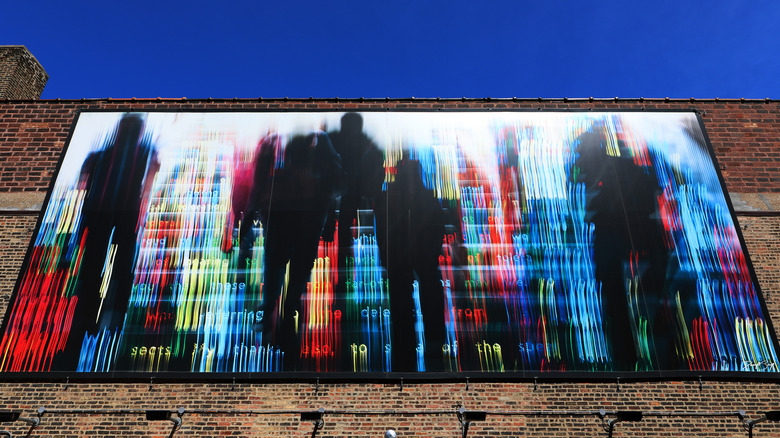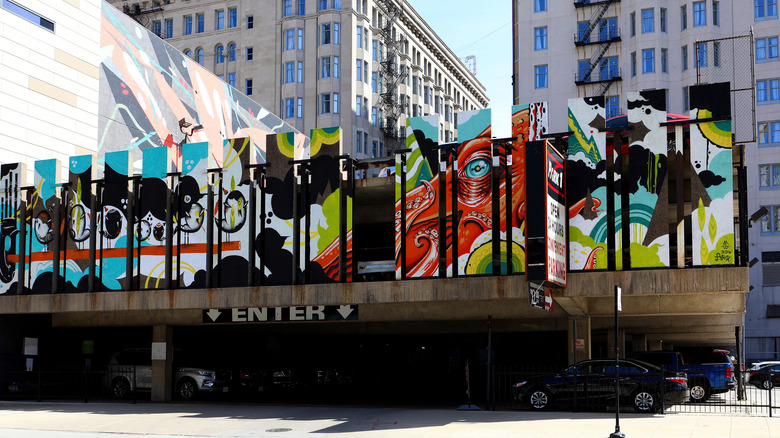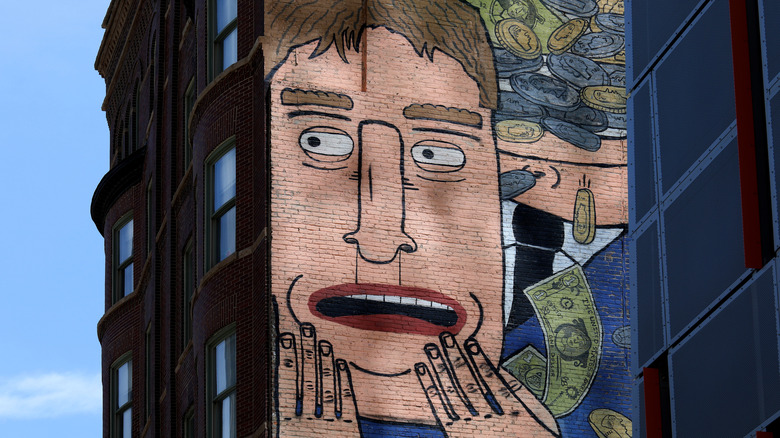One Of America's Best Art Districts Is A Trendy Chicago Corridor Known As A 'Living Urban Canvas'
For many travelers, art can often feel out of reach. Ticketed museums, exclusive galleries, and pricey performances can make engaging with art seem like an elite experience. While public art offers a way to bridge this gap, it's not without challenges. You can check out some of the best airports for public art, which showcase installations that are innovative but may be fleetingly appreciated due to their transient audiences. More initiatives in recent years, like the public Putnam County Mural Project in Indiana, prove that accessible art can thrive when integrated into communities.
Wabash Arts Corridor in Chicago's South Loop neighborhood is reimagining public art on a grand scale. Calling itself a "living urban canvas," this art district was established by Columbia College Chicago in 2013 to bring fresh art into the city's everyday spaces. With its free-to-access murals, performances, and installations, the corridor earned a spot on USA Today's list of top 10 U.S. arts districts. Exploring the Wabash Arts Corridor reveals the vibrancy of Chicago's art scene in a way that feels both intimate and expansive.
Wabash Arts Corridor breathes creativity into the city
The Wabash Arts Corridor's mission is to make art a daily experience. Spanning Wabash Avenue, the corridor's murals and installations serve as bold statements in public space. Mark Kelly, a former faculty member of Columbia College Chicago who helped establish the corridor, described the murals in Next City: "They breathe, meaning they are visible, and when the artists see them they are in disbelief." Its dynamic nature makes the corridor "living," with new works replacing old ones annually. The public space has hosted artists from five continents, featuring not just murals but also large-scale installations and performances.
Visitors can explore the corridor in several ways, whether wandering independently or joining a guided tour. The Chicago Architecture Center, for example, sometimes offers tours, sharing stories about the artists who created them. The core of the corridor spans just a few blocks, with murals adorning defunct factory buildings, parking garages, and tucked-away alleyways. Certain murals are even visible from Chicago's elevated train platforms. To access the corridor, take the train to Roosevelt Station — served by the Red, Orange, and Green Lines — and walk north on Wabash Avenue. The area also boasts 19 galleries, 14 performance spaces, and dozens of restaurants.
Art that stirs conversations
The Wabash Arts Corridor constantly evolves, posting "news reports" to its Instagram where they announce the latest additions. Past highlights include a photography exhibit curated by none other than Courtney Love, which celebrated women in the music industry, and a mural by Collin van der Sluijs depicting endangered Illinois birds amid a beautifully painted display of flowers. Another iconic piece called "Moose Bubblegum Bubble" by Jacob Watts is a digitally altered photograph of a moose with bubblegum in its mouth.
The corridor has even had its share of controversy. In 2021, Dorian Sylvain's mural, "Speak Up!," faced delays when a nearby parking lot owner blocked the artist from having the piece on display in the space, claiming its political themes might deter his customers. The arts corridor has never shied away from political work, though. Opened in 2015, Tatyana Fazlalizadeh's mural "Stop Telling Women to Smile" makes a bold statement about street harassment. A satirical work titled "Don't Fret" depicts a graduate overcome with a pile of student loan debt, gesturing at the steep costs of higher education. Art here invites reflection, whether you agree with the message or not, making the corridor a must-visit for anyone curious about public art's social capabilities. While in Chicago, consider heading to the city's largest neighborhood of Austin, another artsy gem full of murals and historic charm.


